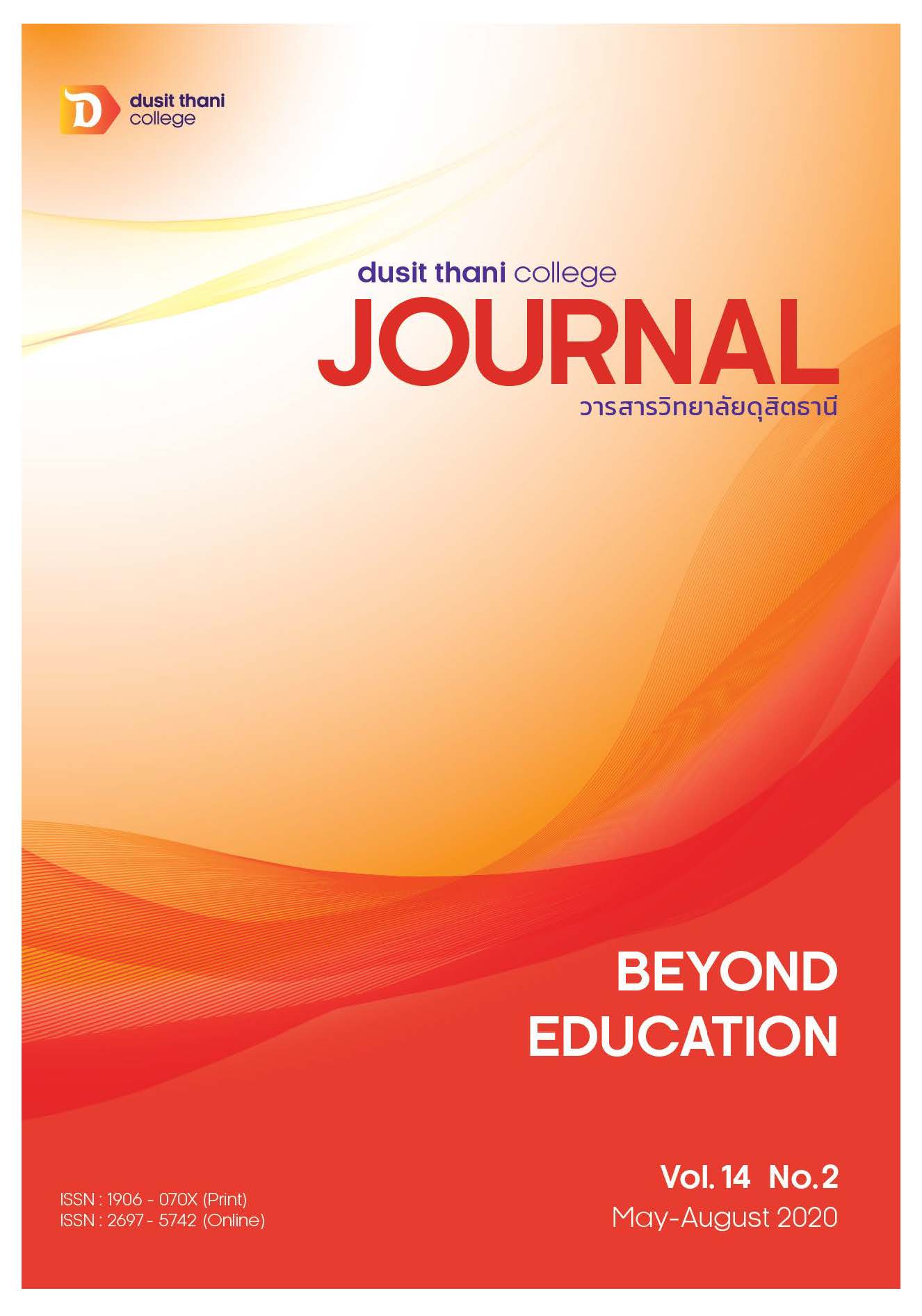Driving Potential of Air Travel in the Southern Region of the Andaman Sea Coast: A Case Study of Phuket Province, Thailand
Main Article Content
Abstract
This research was a qualitative research has the main purpose for study air travel potential in the southern provinces of the Andaman Sea coast. In order to achieve the objectives, the researcher has studied through 2 sub-objectives: 1) to study the factors of tourism elements that contribute to air tourism in Phuket 2) to study the business potential of air travel in Phuket, what is the market segmentation of tourists. The instrument used in this research is in-depth interview, a small group discussion by collecting data from the sample group that is the driving mechanism as follows: 1) Central government sector 2) Local government sector 3) Private sector, the number of people interviewed 29 people.
The results found that the potential of tourism in the Andaman coast province is more prominent than other areas. There are four tourism elements that favorable to the business of air travel, but the service model is in the form of single-point service and still have a limitation of the support areas such as takeoff and landing, safety standards and flight route determination which must be supported by the Department of Civil Aviation. The tourists who prefer such activities are Middle Eastern, Indian, China and Russia as they have a purchasing power.
Therefore, there is an opportunity to operate such business and the business model need to be feasible as well as the support from public and private sectors. Both sectors should work together in the areas of airport standard supervision and a flight route approval. In case of security measurement, if there is a possibility of air travel business, the private sector and civil society should be the government pushers. Especially, the agencies that are responsible for the standards of commercial aviation, air travel and transportation management to speed up the vision review policies and regulations related to aviation business, aircraft, airports and equipment, equipment for operating in air travel and transportation activities in accordance with the business model.
Article Details
Article Screening Policy
- All research and academic articles to be published must be considered and screened by three peer reviews in the relevant field / article.
- All articles, texts, illustrations and tables published in the journal are the personal opinions of the authors. Editors don't always have to agree. And no responsibility whatsoever is the sole responsibility of the author.
- The articles to be published must never be published. Where did you first publish? And not in the consideration of other journals If the audit found that there has been a duplicate publication It is the sole responsibility of the author.
- Any article that the reader sees as being plagiarized or impersonated without reference. Or mislead the work of the author Please let the journal editor know it will be your greatest blessing.
References
Andrianto, T., & Sugiama, A. G. (2016). The Analysis of Potential 4A’s Tourism Component in the Selasari Rural Tourism, Pangandaran, West Java. Paper presented at the Asia Tourism Forum 2016 – The 12th Biennial Conference of Hospitality and Tourism Industry in Asia (ATF-16).
Boonlert Jittungwattana. (2005). Sustainable tourism development. Bangkok: Press and Design.
Bose, T. K. (2012). Market Segmentation and Customer Focus Strategies and Their Contribution towards Effective Value Chain Management. International Journal of Marketing Studies, 4(3), 113-121.
Buhalis, D. (2000). Marketing the Competitive Destination of the Future.
Tourism Management, 21(1), 97-116.
Collier, A., & Harraway, S. (1997). Principle of tourism. Auckland: Longman.
Cooper, C., & Boniface, B. G. (1998). Geography of travel and tourism. UK:
Butterworth Heinemann
Dickman, S. (1996). Tourism: An introductory text (2th ed.). Sydney: Hodder Education.
Dutta, S., & Bhattacharya, S. (2015). Segmentation Research in Tourism: Brief Literature Review. TSM Business Review, 3(1), 69-80.
Lynn, M. (2011). Segmenting and targeting your market: Strategies and limitations. In M. C. Sturman, J. B. Corgel, & R. Verma (Eds.), The Cornell School of Hotel Administration on hospitality: Cutting edge thinking and practice (pp. 353-369). Hoboken, NJ.: Wiley.
Pesonen, J., Laukkanen, T., & Komppula, R. (2011). Benefit segmentation of potential wellbeing tourists. Journal of Vacation Marketing, 17(a), 303-314.
Steven, D. P. (2008). Destination Marketing: an integrated marketing communication approach. Burington, MA.: Butterworth-Heinmann.
Thai Meteorological Department. (2017). Phuket climate summary. Retrieved 15 October, 2018 from http://climate.tmd.go.th/data/province.
Tourism Authority of Thailand. (2013). Southern Thailand Tourism Resources: Phuket. Bangkok: Tourism Authority of Thailand (TAT).
Wiwatchai Boonyapak. (1986). The Impact of Tourism Industry in Art and Cultural Heritage. TAT Review Magazine. 4, 31-38.


